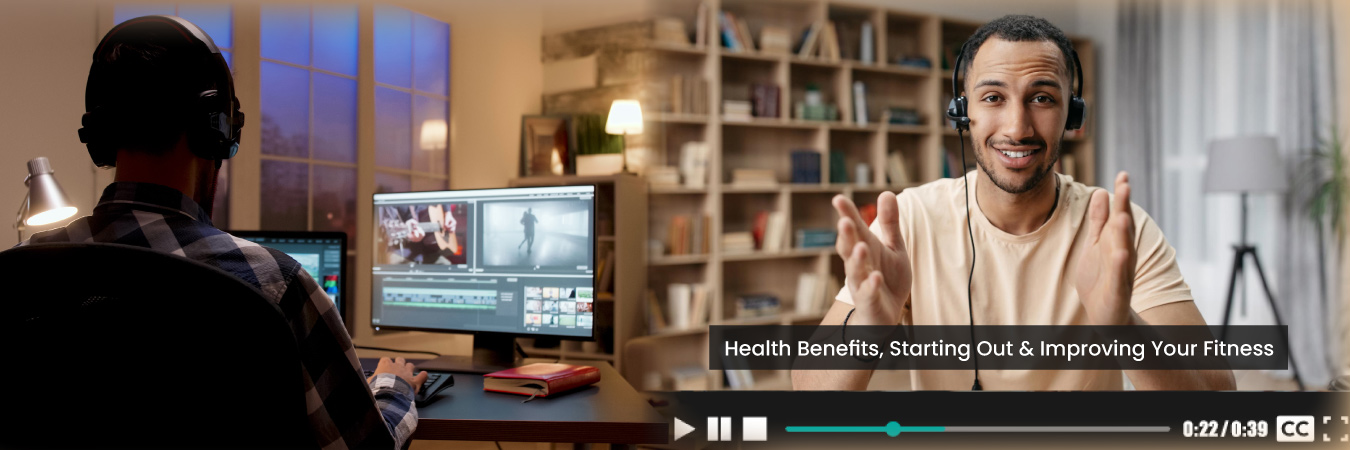
Best Practices for Subtitling
Having subtitles appearing at the bottom of a video screen proves so helpful, isn’t it? It helps you comprehend the video and consume the content more usefully. Apparently, subtitling may seem straightforward. After all, you merely have to transcribe or translate the sentences on the screen! However, that’s not the case. From subtitle creation to subtitle formatting, it requires an expert to adhere to the best practices for subtitling and simplifying the understanding of the content. So, let’s look at some vital subtitling tips.
8 Best Practices for Subtitling
Subtitling is a pretty complex job that requires taking care of numerous aspects. The idea is to create an accurate, easily readable, and comprehensible subtitle. Following the below eight best practices for subtitles can help do it.
1. Using Concise and Simple Language
The subtitle should be as concise (yet accurate) and as straightforward as possible. Two lines are the maximum space a subtitle would have to fit on the screen. Ensuring that for smaller onscreen sentences is possible. However, it is subtitling longer onscreen sentences that test the subtitling expert’s abilities. For that, the subtitling expert should know the context and provide a translation close to the source. They can even apply their linguistic creativity and paraphrase to shorten the sentence yet retain its meaning.
2. Synchronizing with the Audio
Unsynchronized subtitles can easily lose the context and make reading those subtitles an annoying experience for the viewer. A little here and there can be understood and tolerated in live translation environments. However, when you have the time to create subtitles, test them, and synchronize them with the audio or video, you should do it.
3. Using Proper Punctuation and Grammar
Incorrect spelling and poor grammar can break the flow and spoil the overall experience, especially for viewers with an excellent understanding of the subtitling language. Thus, subtitling experts should use punctuation accurately and ensure grammatical accuracy. It involves a considerable effort in proofreading. However, it is imperative to ensure linguistic accuracy to deliver a flawless subtitling experience.
4. Using Brackets to Denote Off-Screen Actions or Sounds
Hard-of-hearing people cannot consume every bit of the audio or video if you do not signify them. One way of doing it is placing such sounds in brackets, usually in their line to denote them clearly and inform the audience of everything happening on screen. Subtitling experts should also use ellipses to denote pauses or incomplete thoughts. For instance, if the speaker stops speaking before completing the thought or sentence, an ellipsis should be added to indicate the sentence’s incompleteness and not the subtitle.
5. Indicating Stressed Words in Italics
In some cases, depending on the context, the speaker will use a lot of stress in the speech to emphasize a specific point. In such situations, you can highlight those words using italics to indicate they’ve been stressed.
6. Being Neutral During Subtitle Creation
A subtitling expert is expected to capture the meaning of the spoken sentences and present it in the form of subtitles. In cases where they have some amount of creative liberty, they can paraphrase the spoken sentence, yet stay careful while selecting the words and know how audiences can interpret the words used.
7. Using the Right Font Colors and Sizes
The job of subtitles is to show onscreen sentences or convey their right meaning clearly and concisely. Hence, subtitling professionals shouldn’t use unusually sized fancy fonts. The subtitle font should be simple in black or white color depending on the background. The idea is to make subtitles readable and easily understandable. Being straightforward can help do it and save effort in making it unnecessarily fancy.
8. Testing Subtitles
Another significant aspect of subtitle creation is testing subtitles on multiple devices and platforms. Testing is as important as proofreading. Hence, you should test various aspects of subtitles, including subtitle formatting, etc. on multiple devices like laptops, tablets, and mobile phones and platforms to ensure they are compatible, easily viewable, and readable. Additionally, consider gathering feedback from viewers to check issues and areas for improvement.
While it is understood that subtitles contribute to a better audio-visual experience, the choice of subtitling experts also matters. Filose can step in as an appreciable choice. With nearly one and a half decades of experience subtitling, a team of subtitling professionals, and adherence to best practices, Filose proves the right and visionary choice. Email us at sales@filose.com to explore more about our subtitling services and support.
Ref. No – FLN03241047
Contact Us
Are you looking for Language Services? Fill form for quick contact.
